
The Grand Hotel today
This article was published previously in Saigoneer http://saigoneer.com
One of the city’s most historic buildings, the Grand is better known as the former Saigon-Palace, one of the leading hotels of the 1930s.
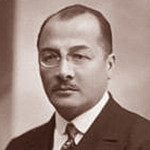
Henri Chavigny de Lachevrotière (1883-1951)
The Grand-Hôtel de Saigon was founded by Henri Chavigny de Lachevrotière (1883-1951), a Eurasian journalist, plantation owner and businessman who is perhaps best known as the editor of the leading colonial-era newspapers L’Impartial (1917-1926) and La Dépêche (1928-1940).
In 1924, Chavigny de Lachevrotière set up the Société du Grand-Hôtel de Saigon and opened a café at the junction of rues Catinat [Đồng Khởi] and Vannier [Ngô Đức Kế]. In 1925 he acquired the franchise to run the new Majestic Hotel, and then in 1929 his company embarked on the construction of the 68-room Grand-Hôtel de Saigon at 8 rue Catinat. It was inaugurated in 1930, with Chavigny de Lachevrotière as its first director.
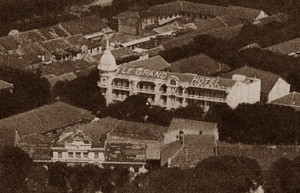
The original Grand-Hôtel de Saigon, pictured in the period 1930-1932
In fact, the Grand-Hôtel de Saigon survived for just two years; in 1932, Chavigny de Lachevrotière sold it to a French Corsican businessman named Patrice Luciani.
A former deputy prison governor who had worked both at the Maison Centrale in Saigon and on the prison island of Poulo-Condor in the Côn Đảo archipelago, Luciani amassed a small fortune in the 1920s from his rubber plantation at Lai Khê, Thủ Dầu Một. In 1928, this enabled him to purchase from the Hérald family the first Saigon-Palace Hôtel, located at 82-98 boulevard Charner [Nguyễn Huệ].
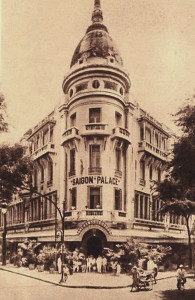
The Saigon-Palace Hôtel pictured in the mid 1930s
Although no images of the first Saigon-Palace Hôtel have survived, a newspaper advertisement of 1929 boasts of “all modern comforts,” including “comfortable rooms and lounges at guests’ disposal” and a restaurant known for the quality of its Corsican soup, Aïoli (Provençal sauce) and French wines.
Immediately after acquiring the Grand-Hôtel de Saigon from Chavigny de Lachevrotière in 1932, Luciani closed his old hotel and changed the name of the Grand-Hôtel to “Saigon-Palace Hôtel.”
Under Luciani’s management, the new Saigon-Palace Hôtel was promoted as a “Hotel of the First Order,” and during the 1930s it became one of the most successful in the city. Its terrace cafe-restaurant became famous for its nightly concerts and its spacious “salle de réunion” was always in demand for meetings by local organisations.
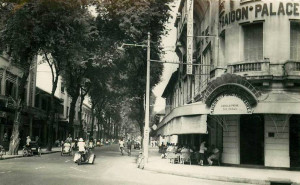
The Saigon-Palace Hôtel in the 1950s
When Luciani retired in 1939, the Saigon-Palace Hôtel was purchased by another French Corsican businessman named Antoine Giorgetti, and it was under his management in the 1940s that it was converted into rented apartments. It is said that in the early 1950s, Graham Greene used these rented apartments as the model for Thomas Fowler’s “room over the rue Catinat,” where much of the action in his novel The Quiet American takes place.
After 1955, the Saigon Palace was reinstated as a hotel under the Vietnamese name Sài Gòn Đại Lữ Quán, but in subsequent years it became increasingly shabby and down-market. It continued to function as a hotel after Reunification, although in 1989 it was renamed the Đồng Khởi Hotel, a name which is still posted today on one side of the building.
Following a major renovation in 1995-1998, the hotel reopened as the Grand Hotel. It was awarded four stars in 2004.
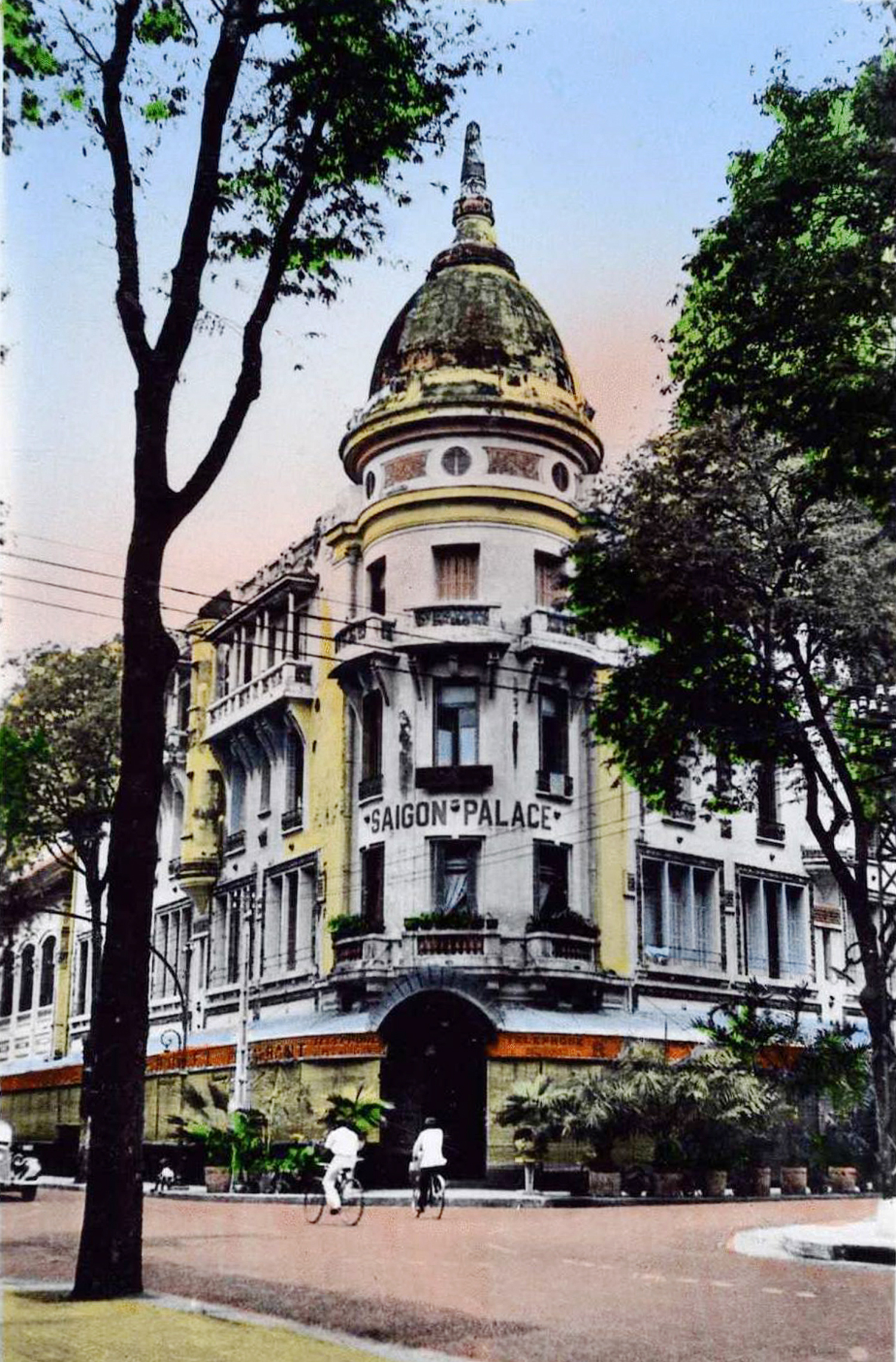
The Saigon-Palace Hôtel in the 1940s
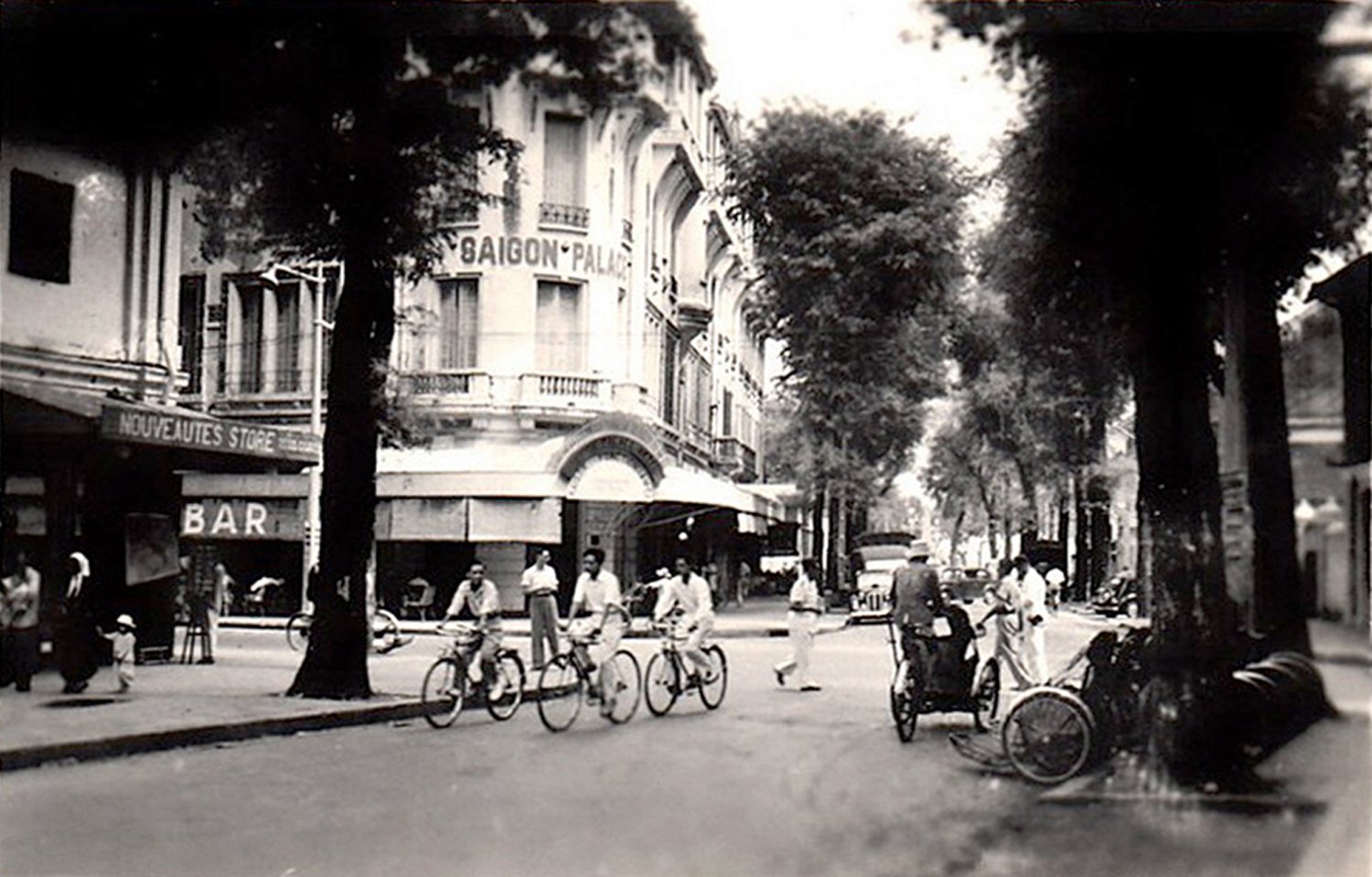
Another 1950s shot of the Saigon-Palace Hôtel
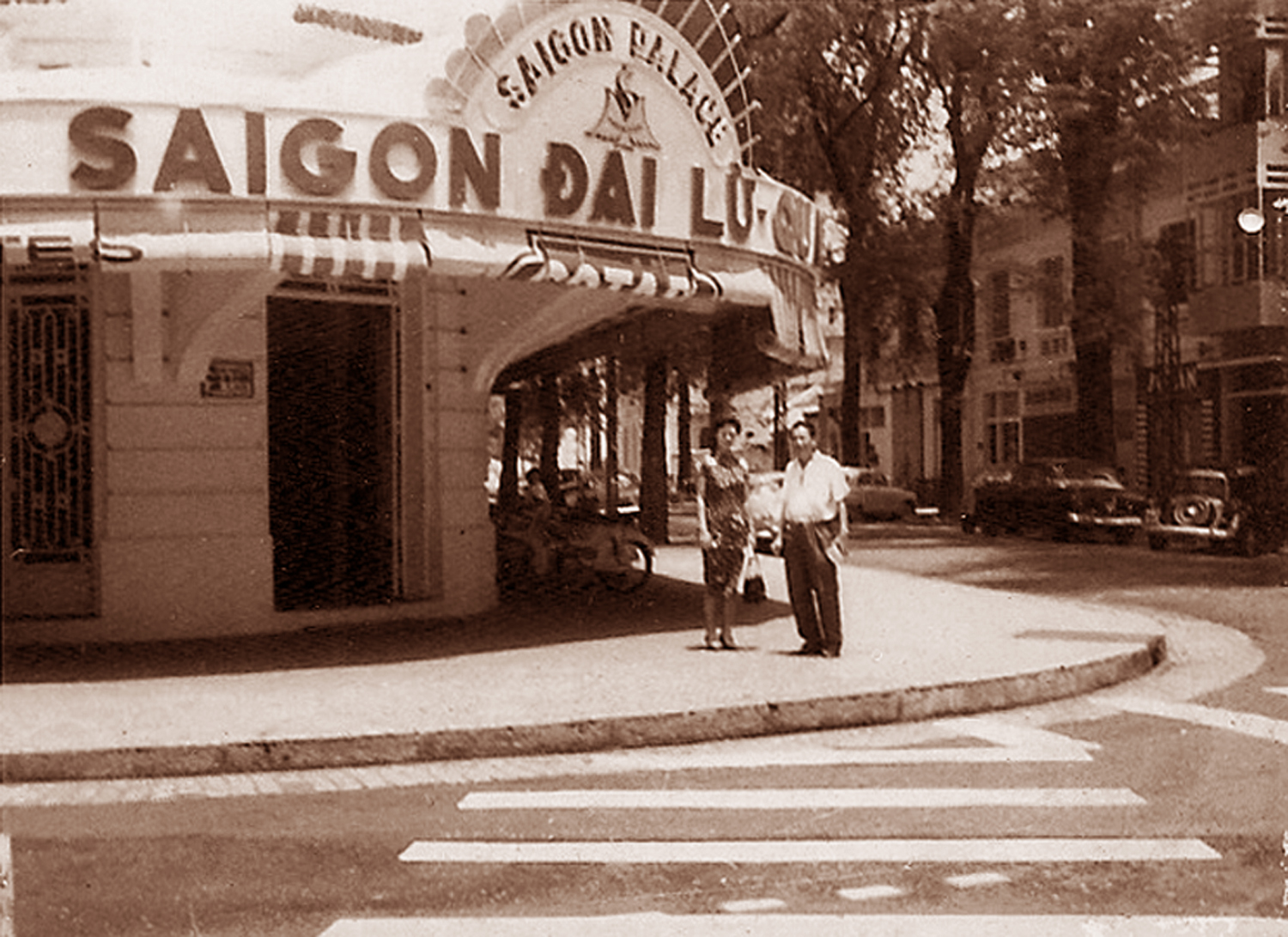
The entrance to the Sài Gòn Đại Lữ Quán (Saigon-Palace Hôtel) in 1960
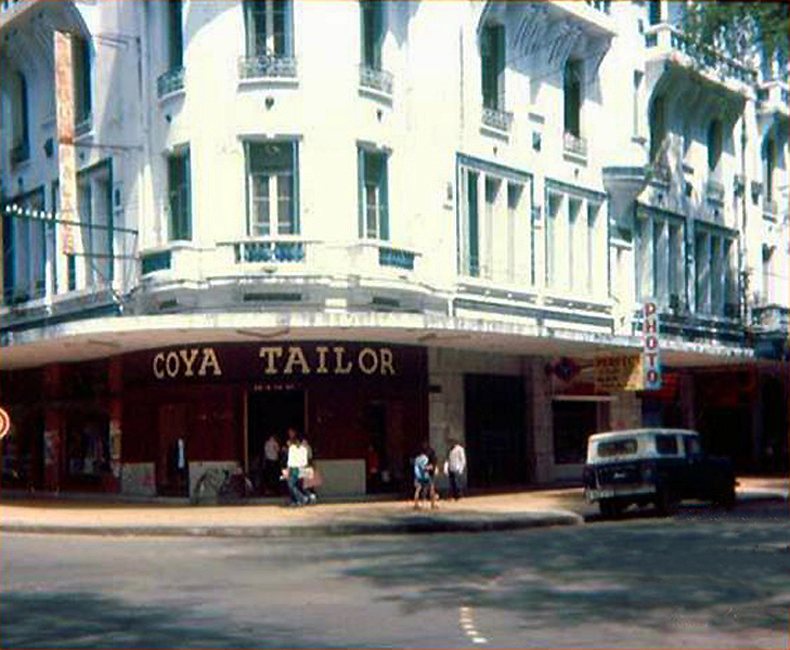
The Saigon-Palace Hôtel in 1968
Tim Doling is the author of the guidebook Exploring Saigon-Chợ Lớn – Vanishing heritage of Hồ Chí Minh City (Nhà Xuất Bản Thế Giới, Hà Nội, 2019)
A full index of all Tim’s blog articles since November 2013 is now available here.
Join the Facebook group pages Saigon-Chợ Lớn Then & Now to see historic photographs juxtaposed with new ones taken in the same locations, and Đài Quan sát Di sản Sài Gòn – Saigon Heritage Observatory for up-to-date information on conservation issues in Saigon and Chợ Lớn.

